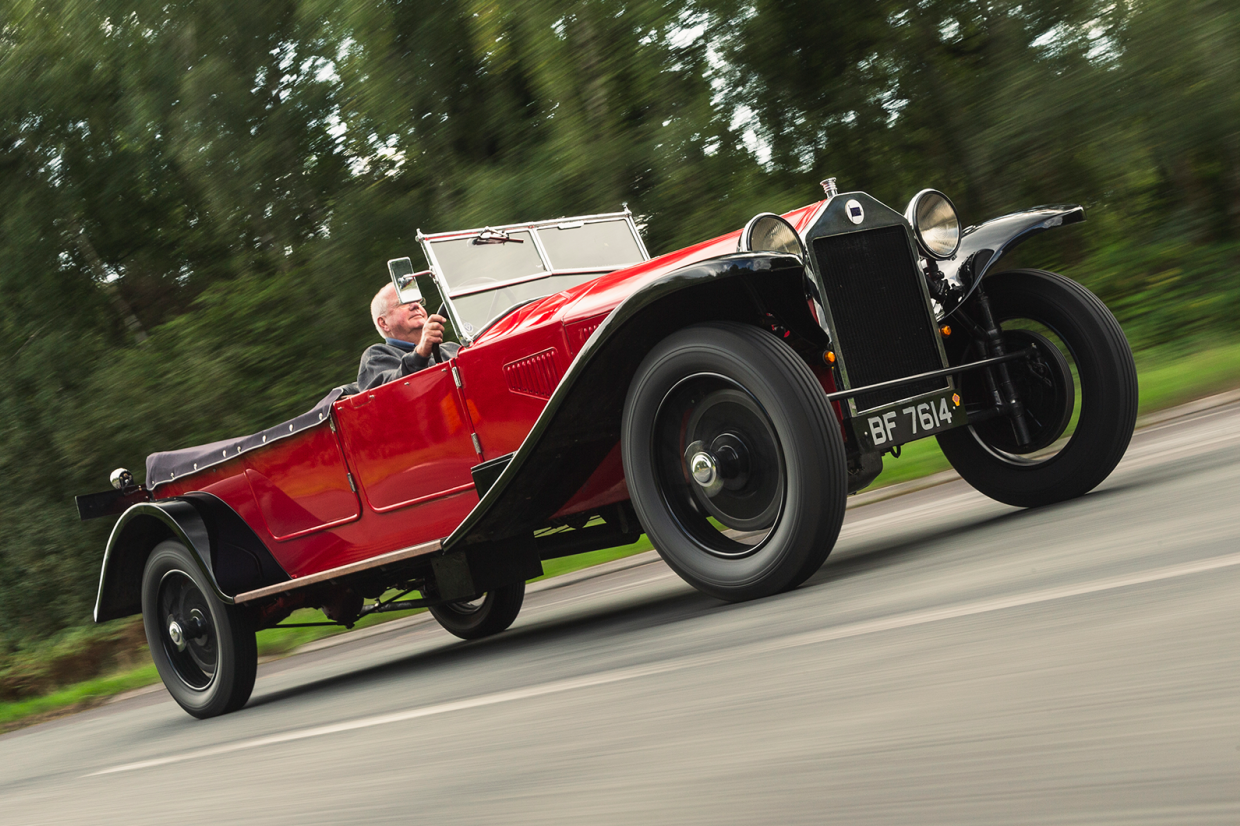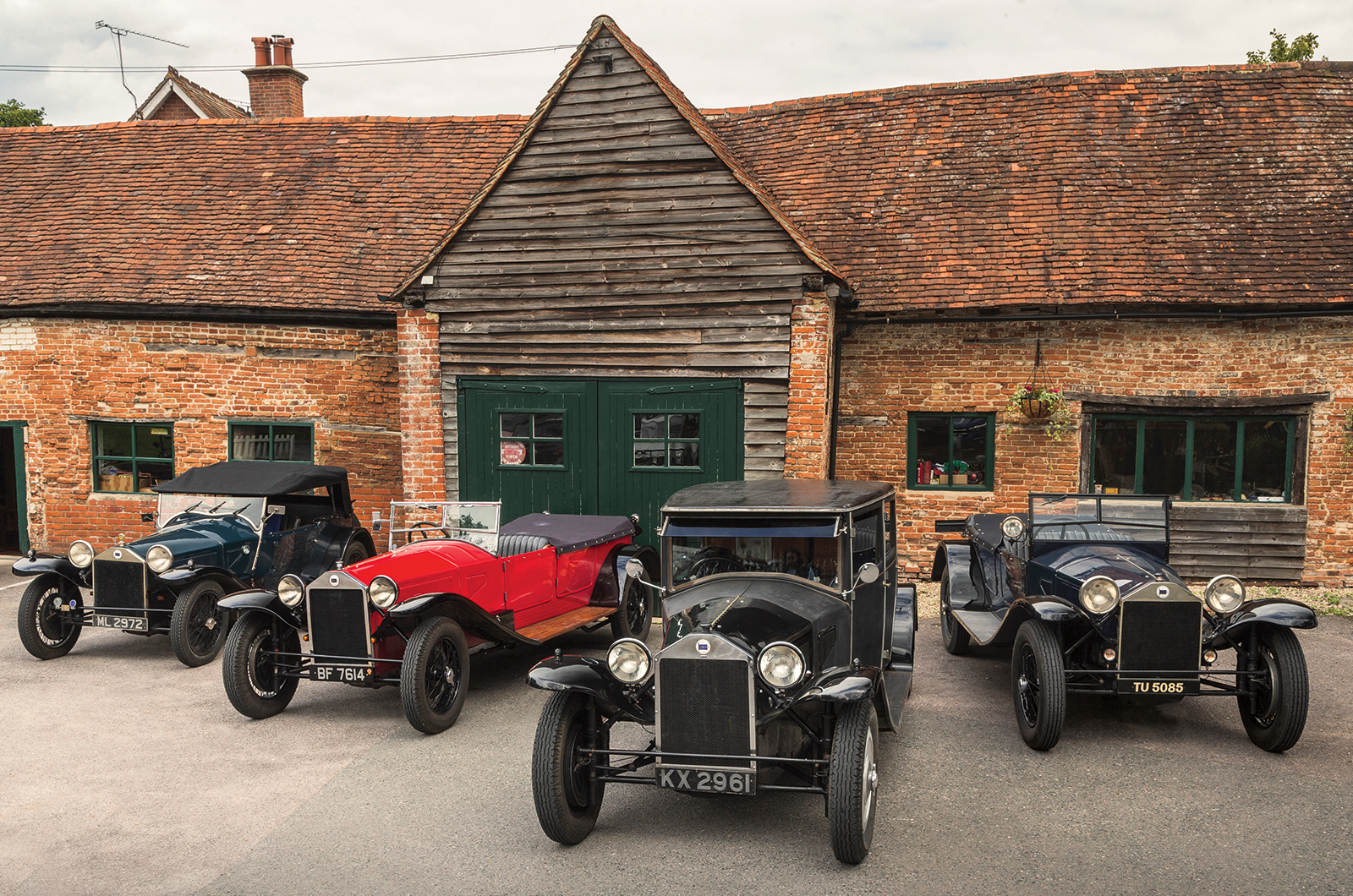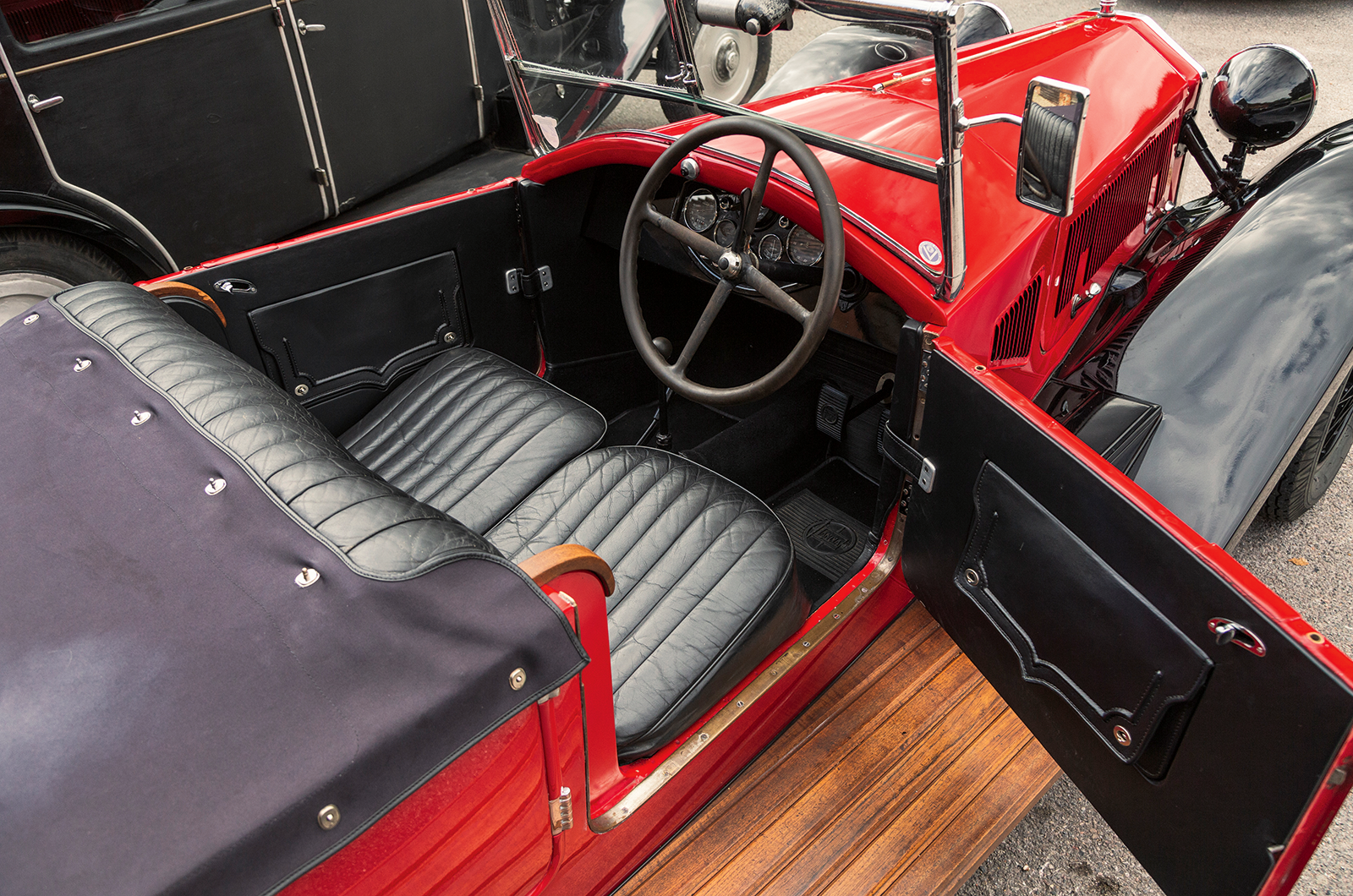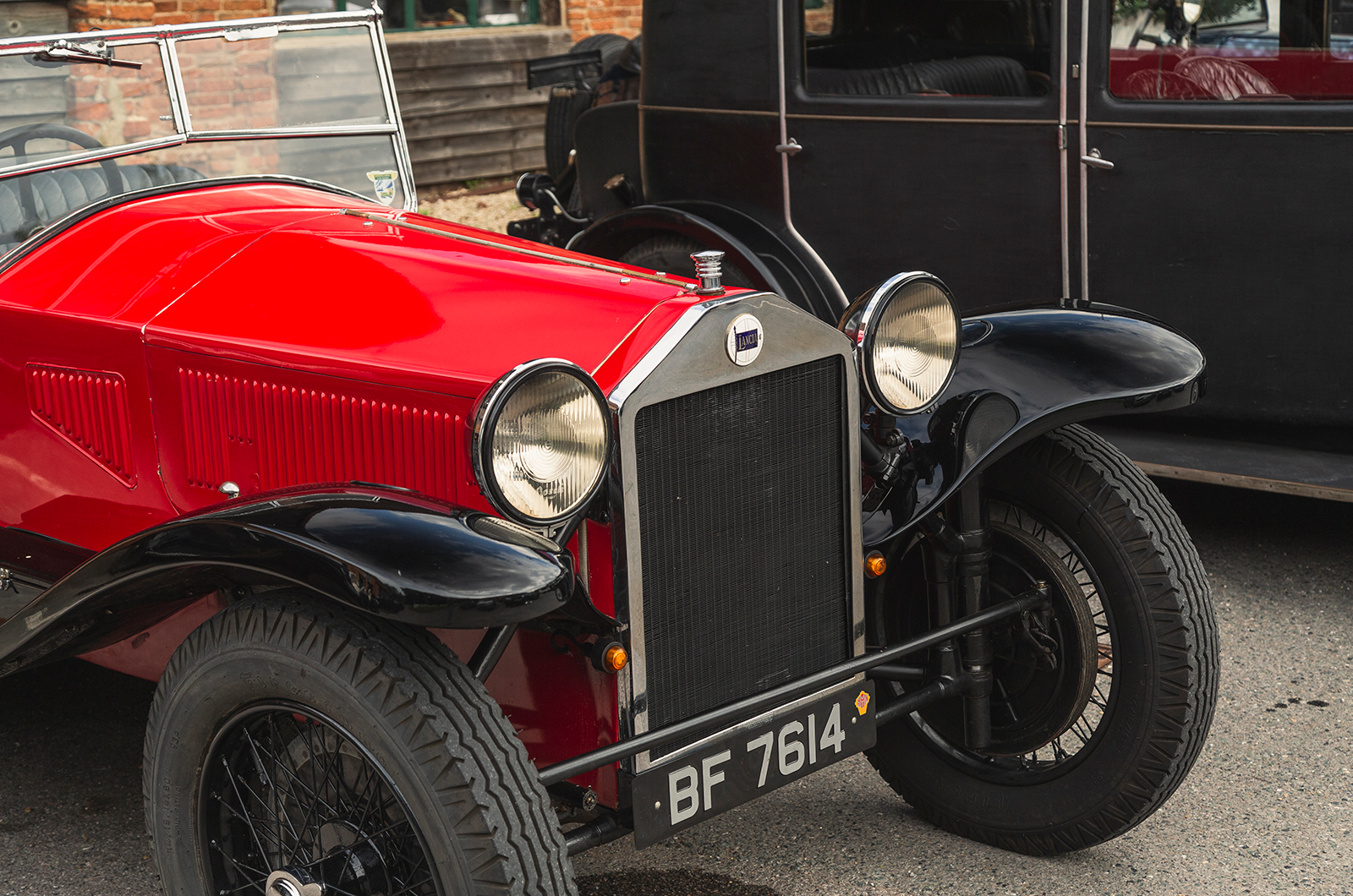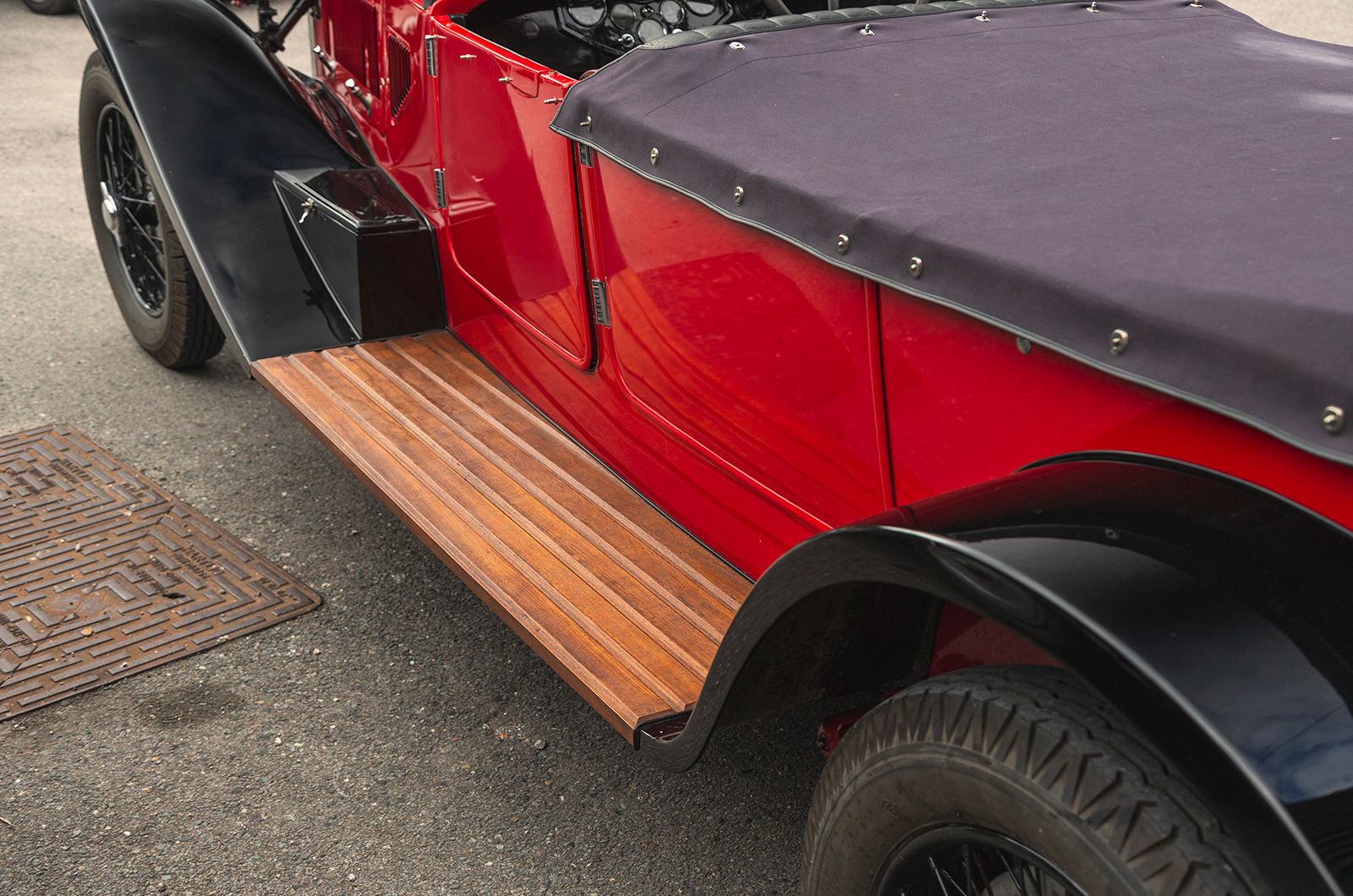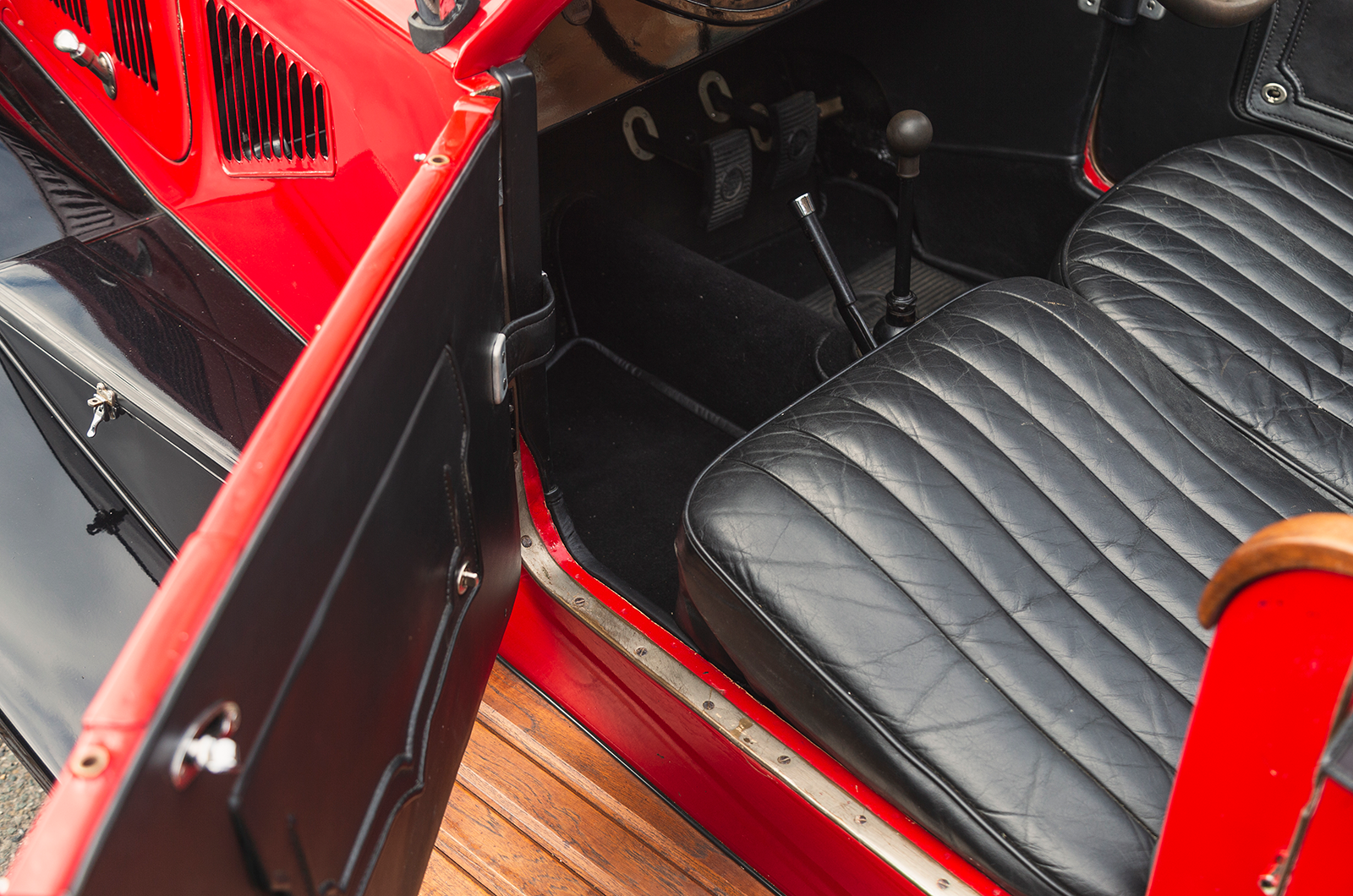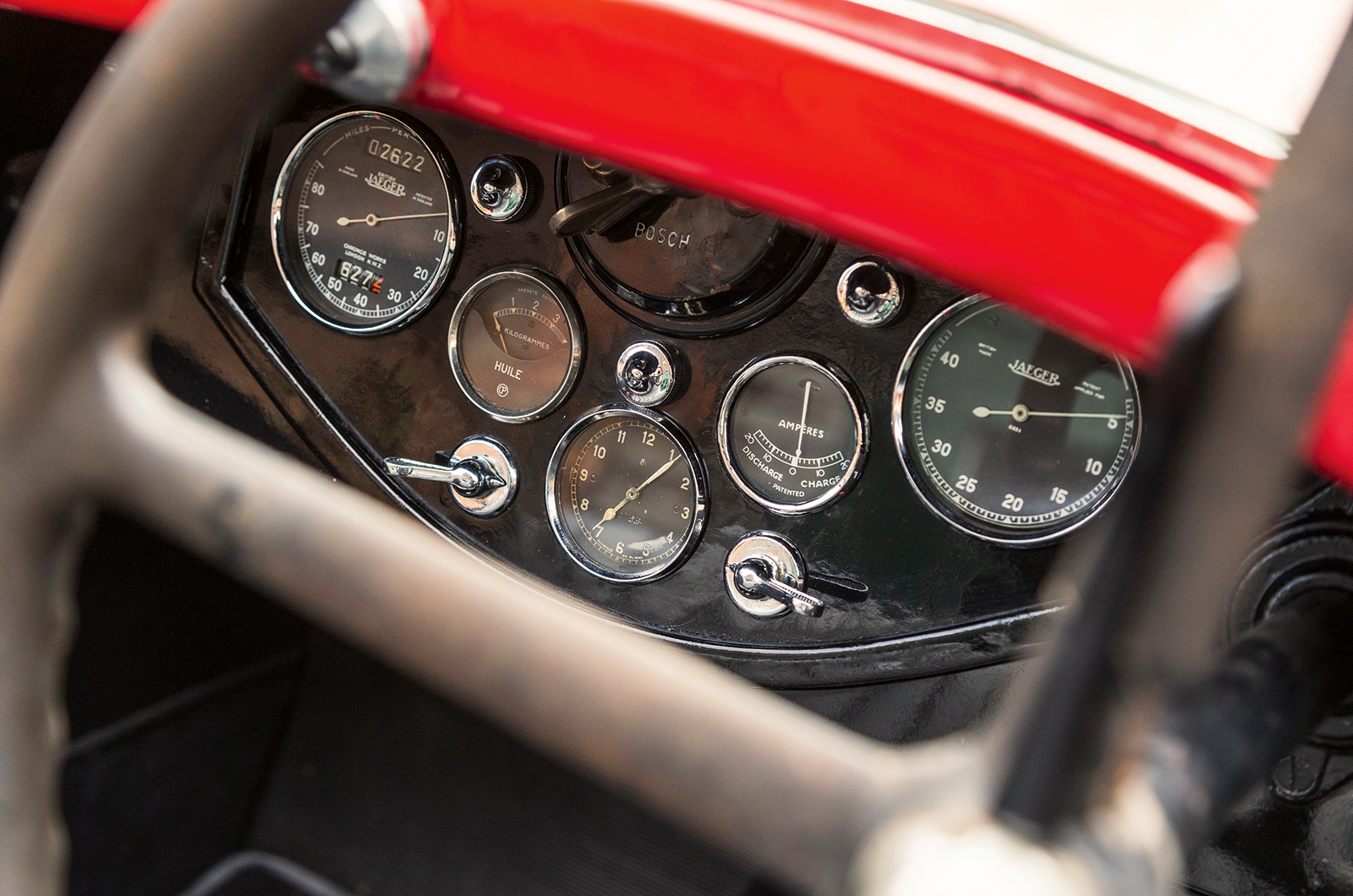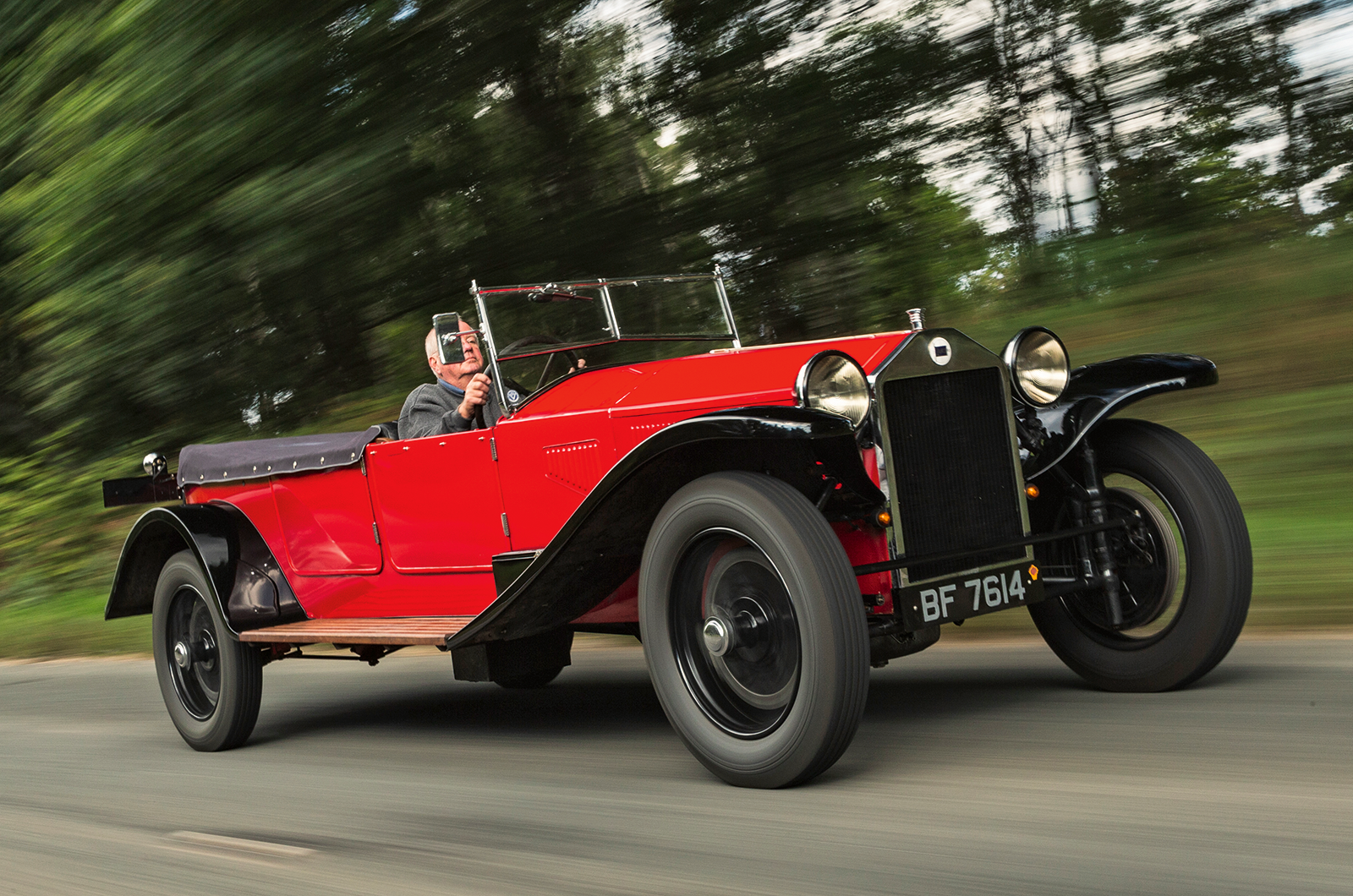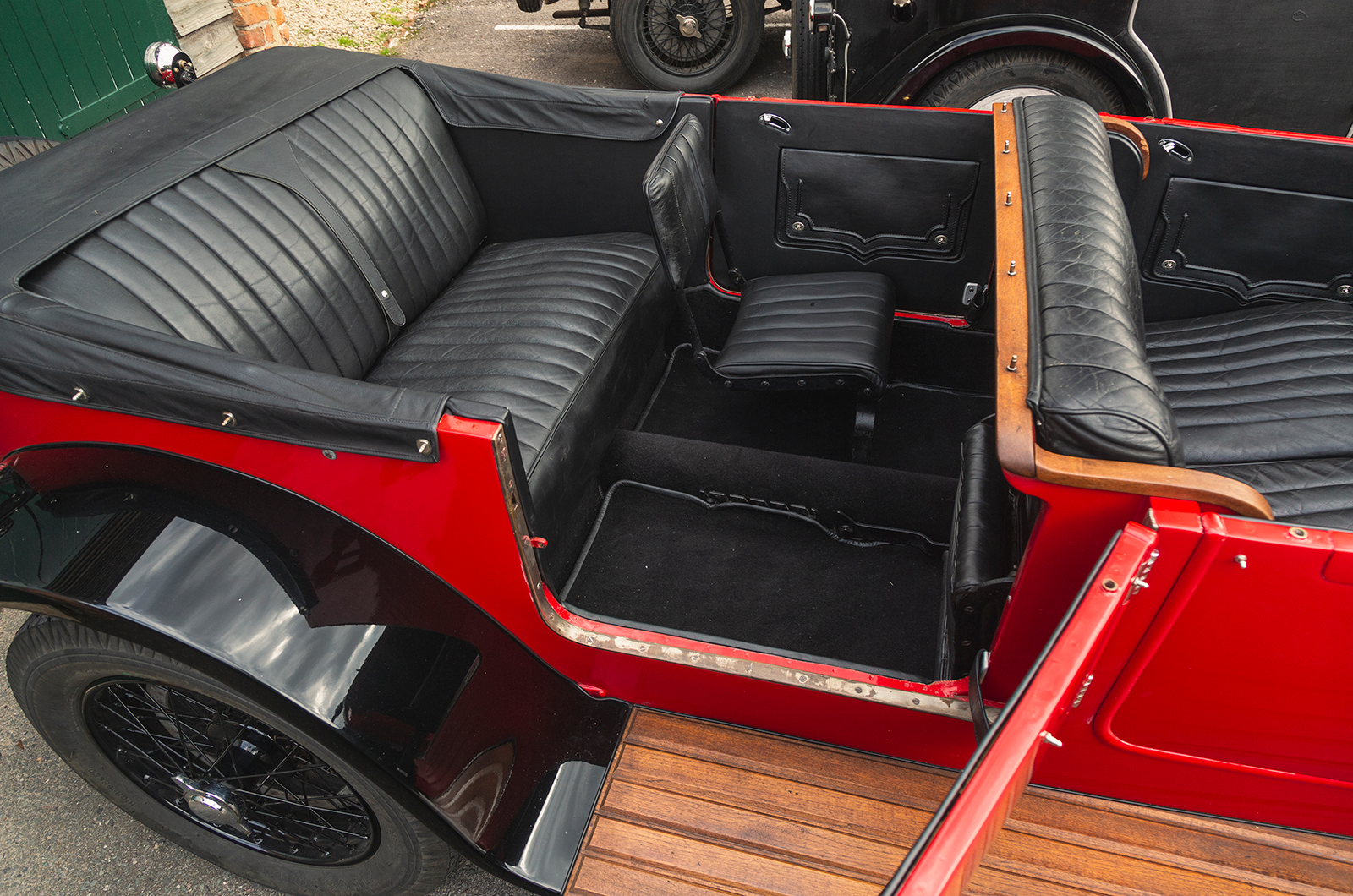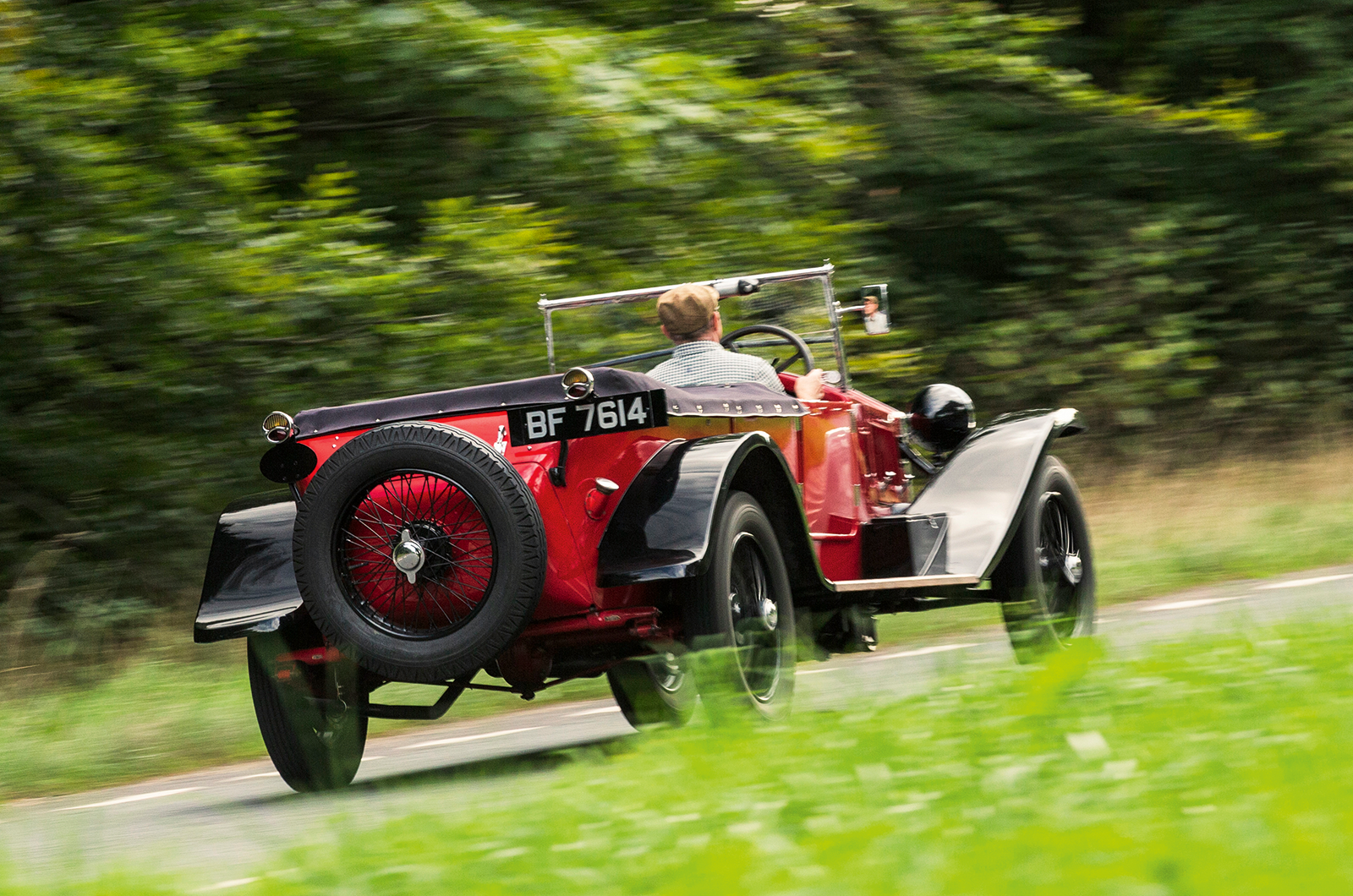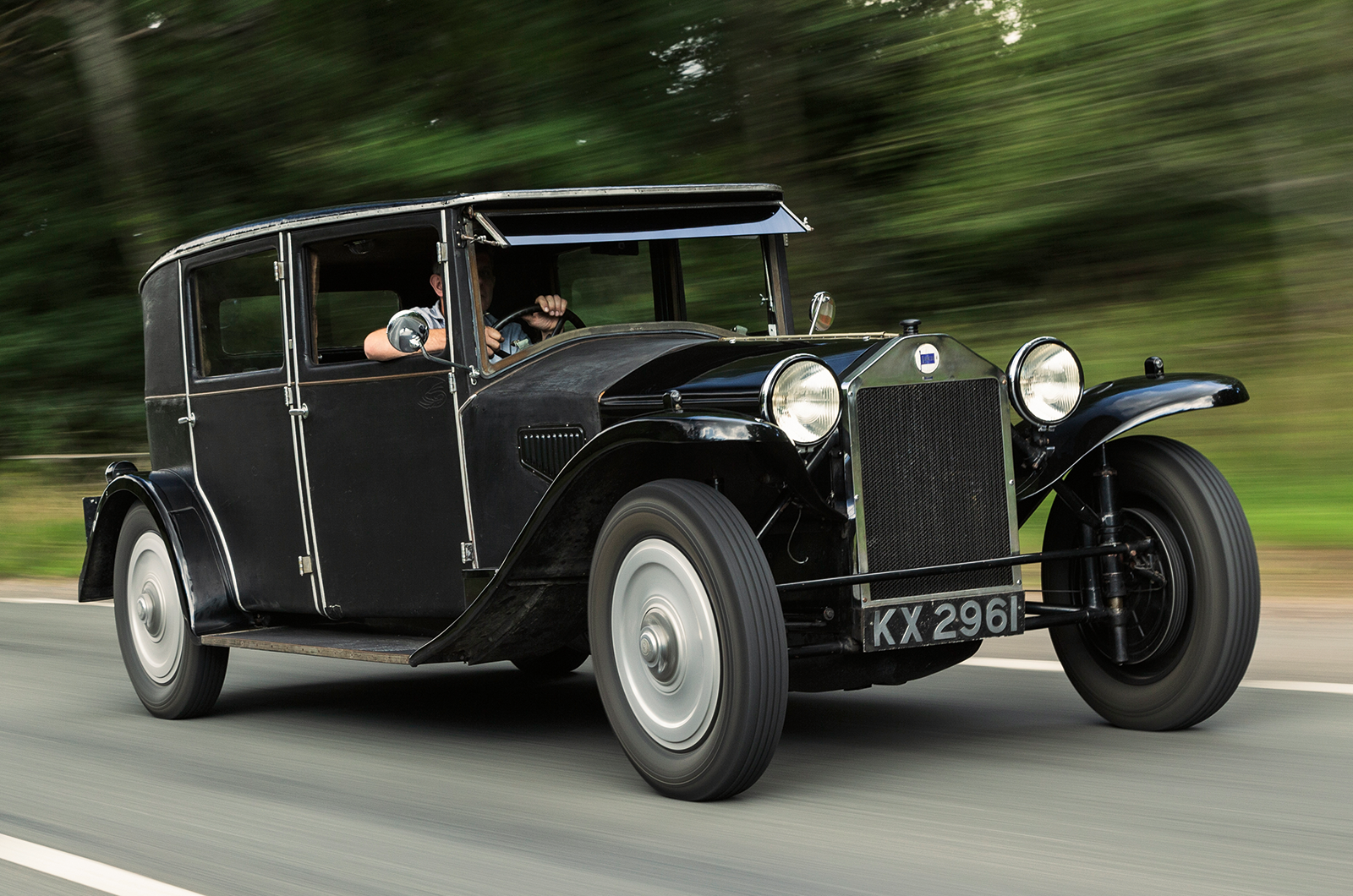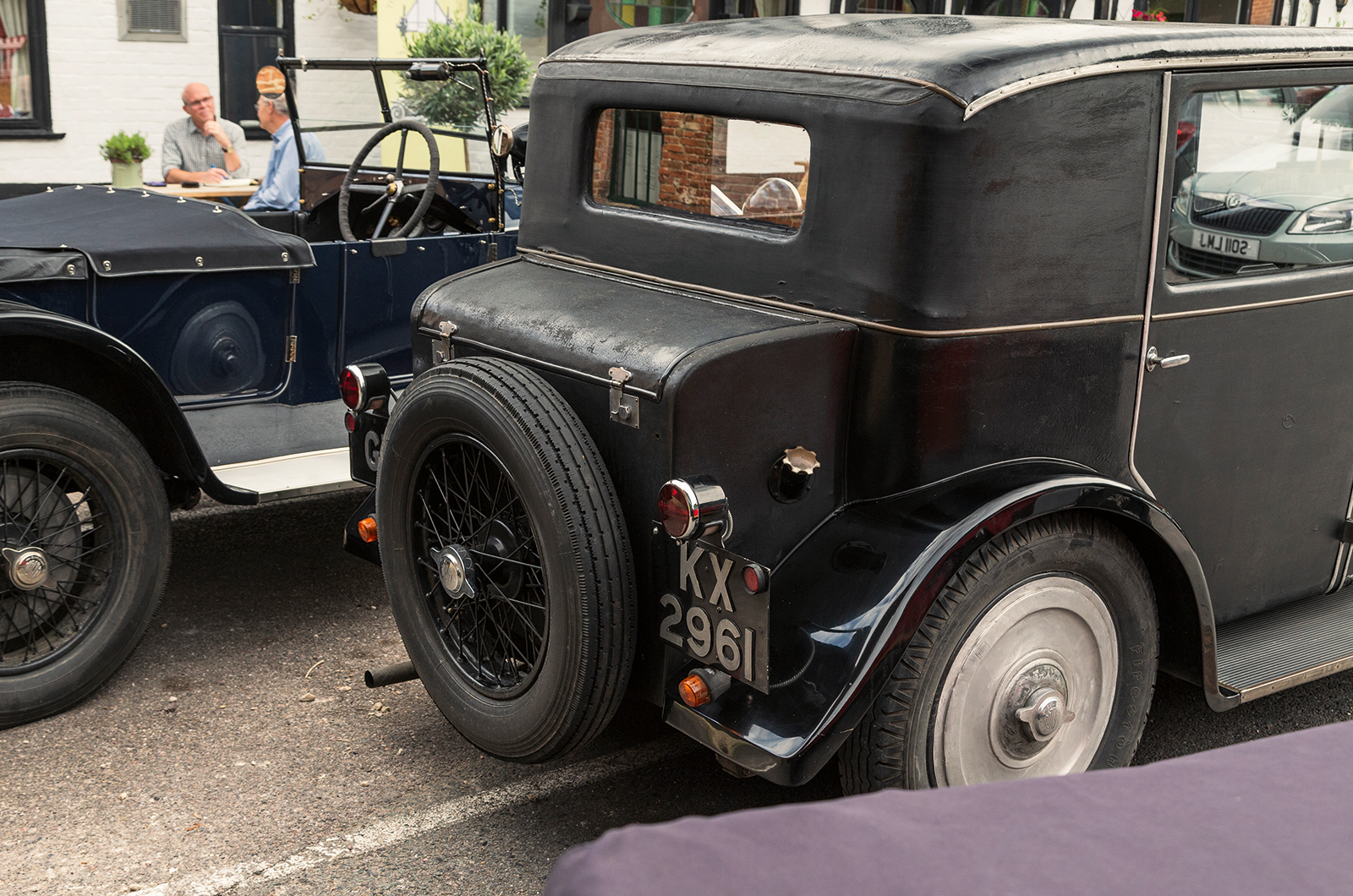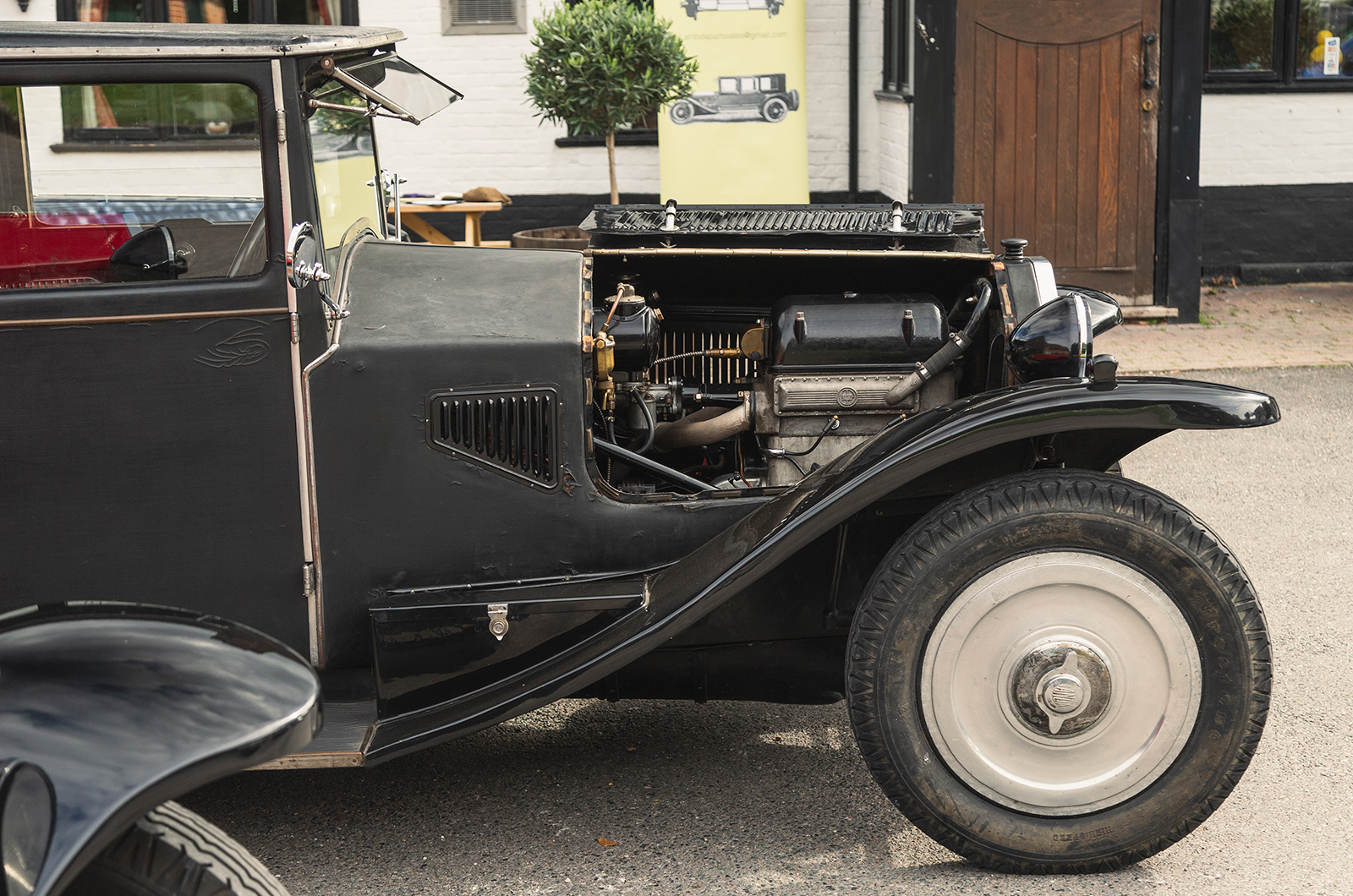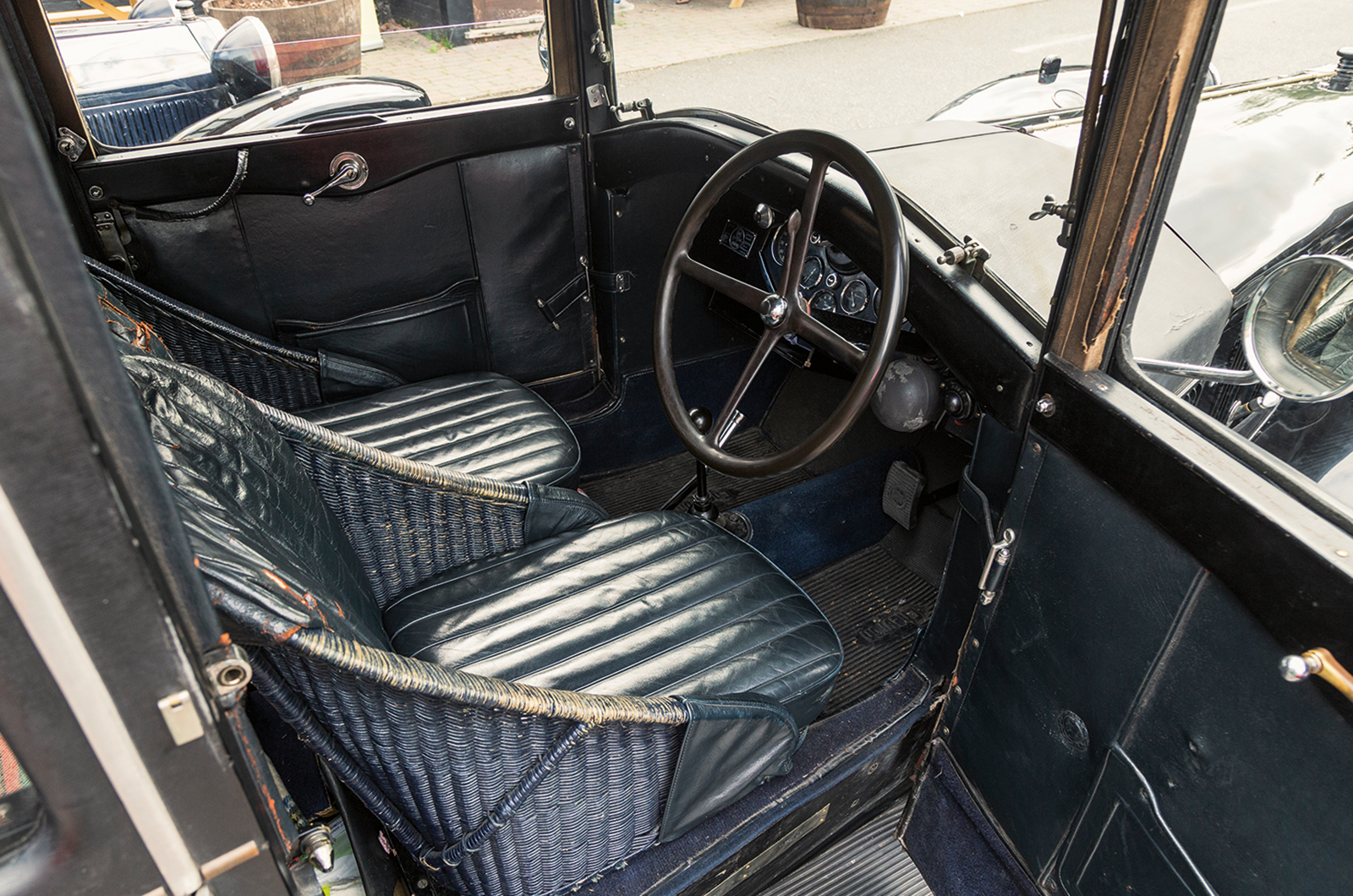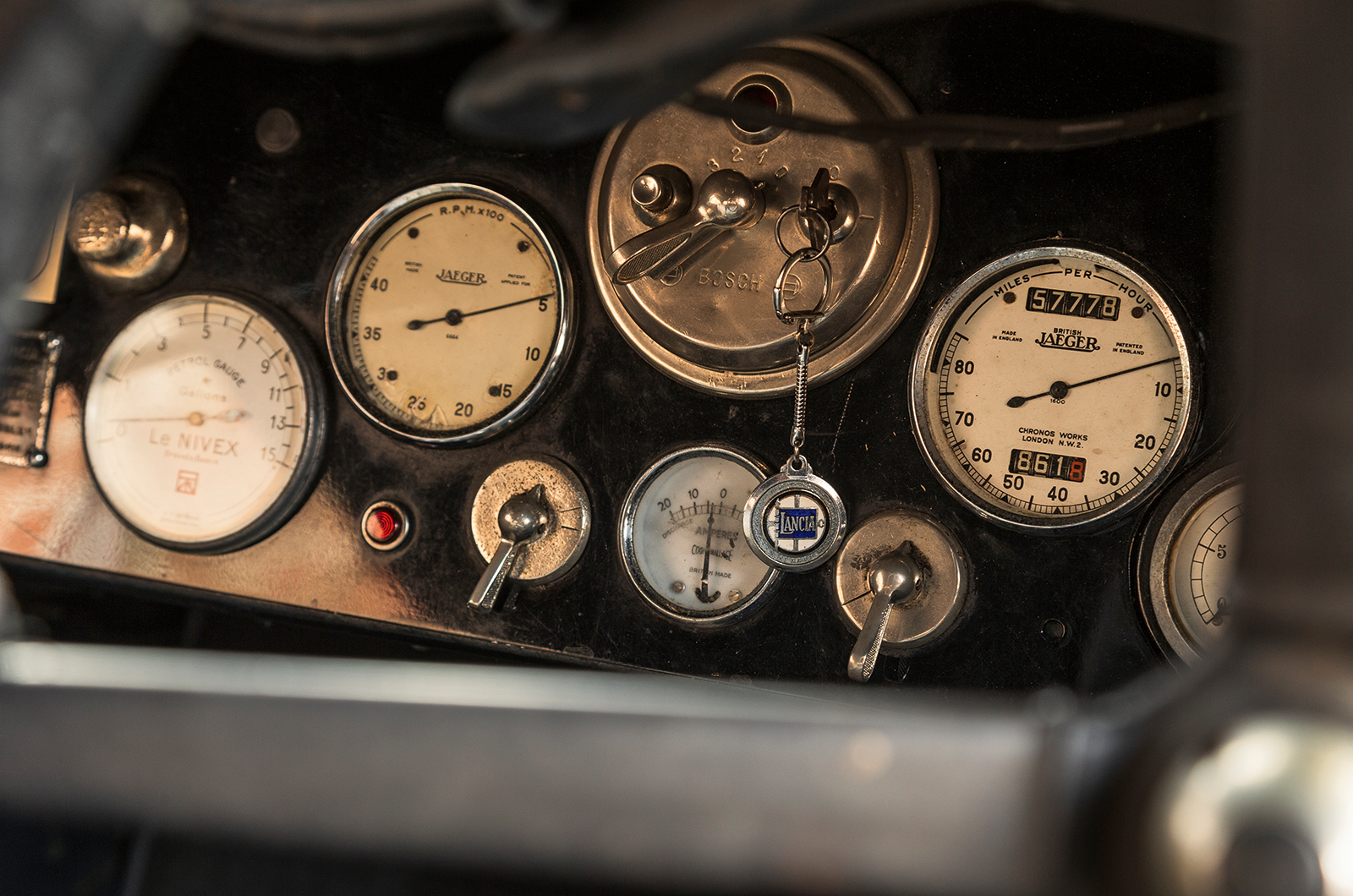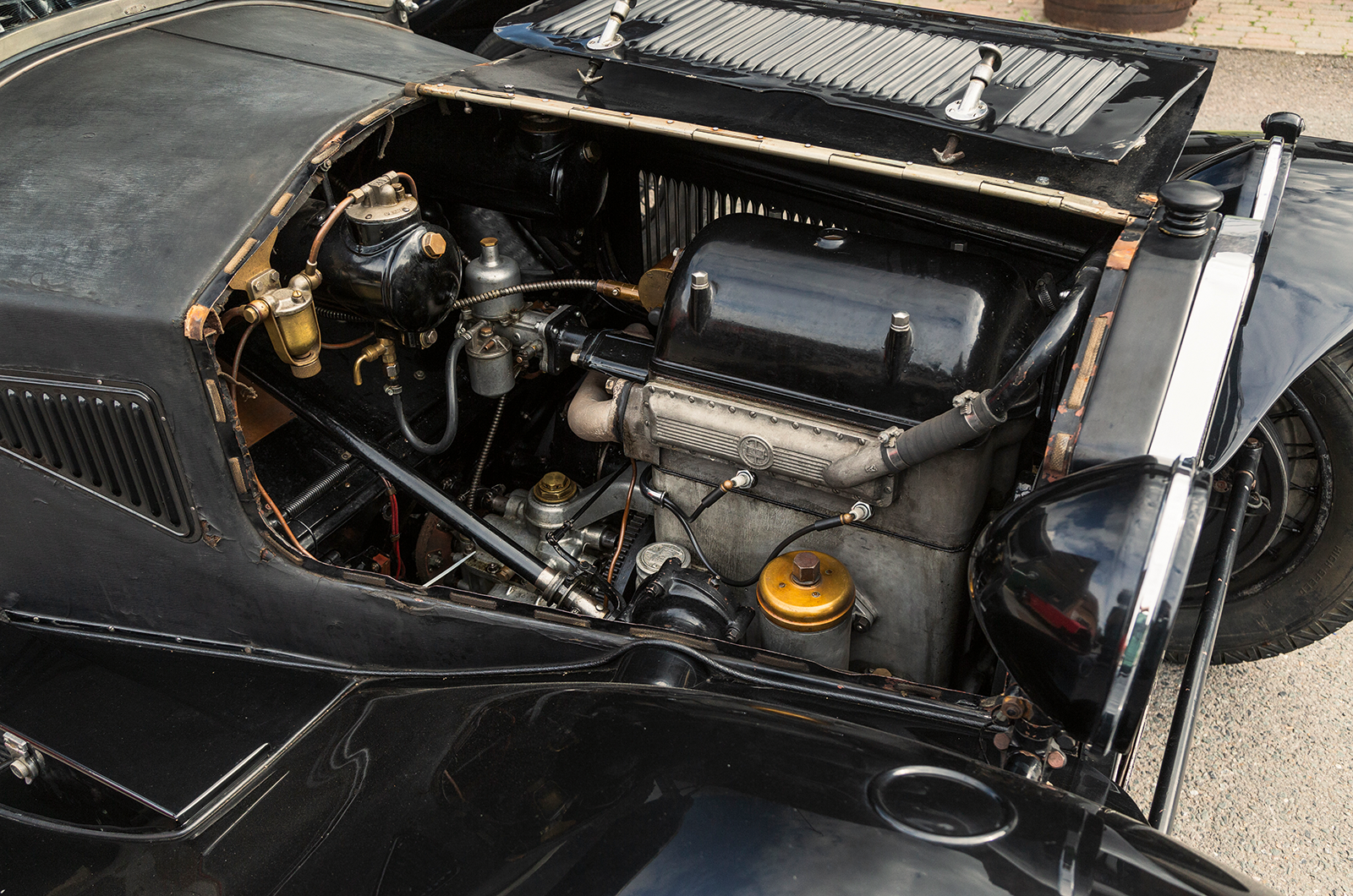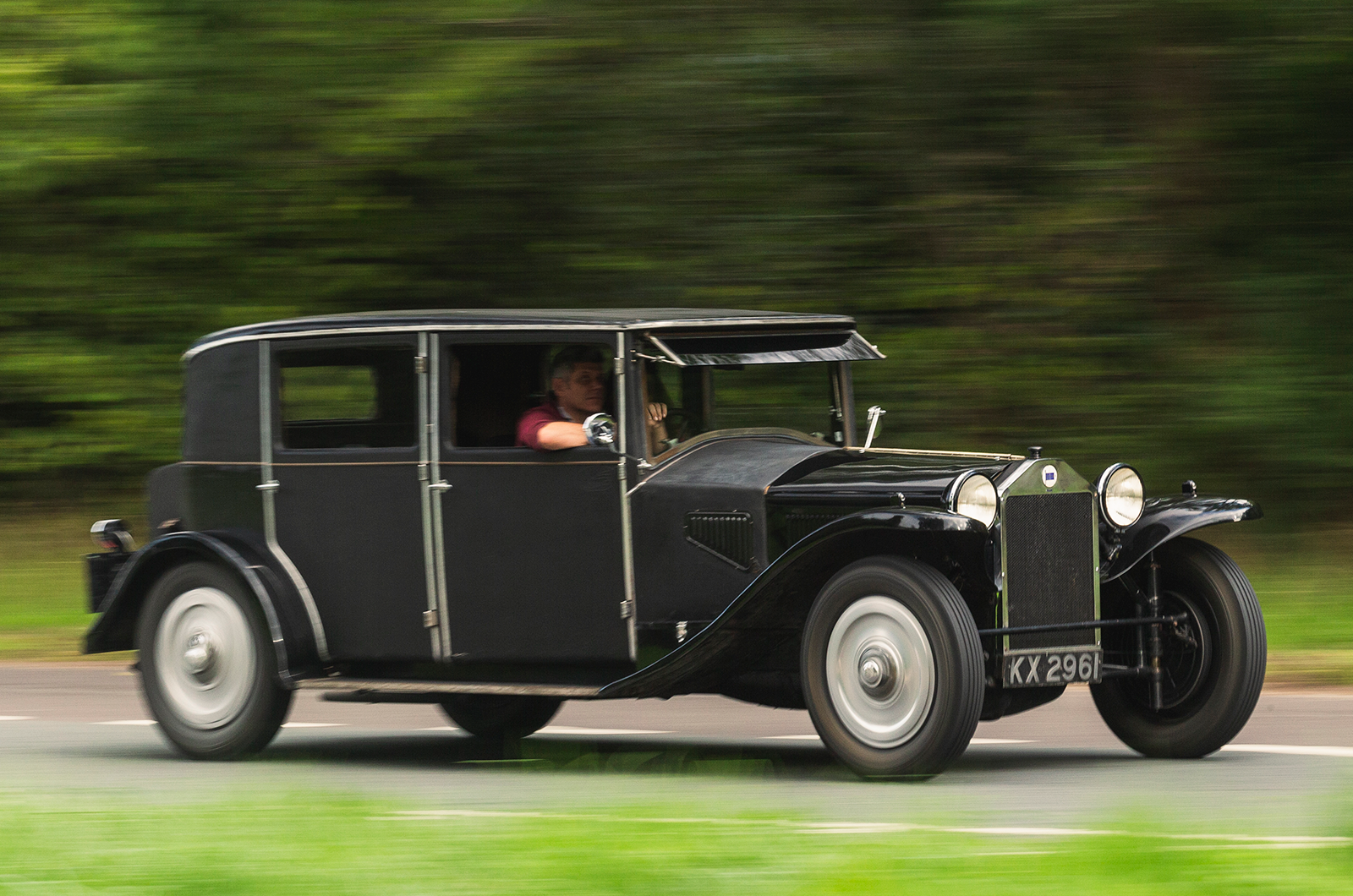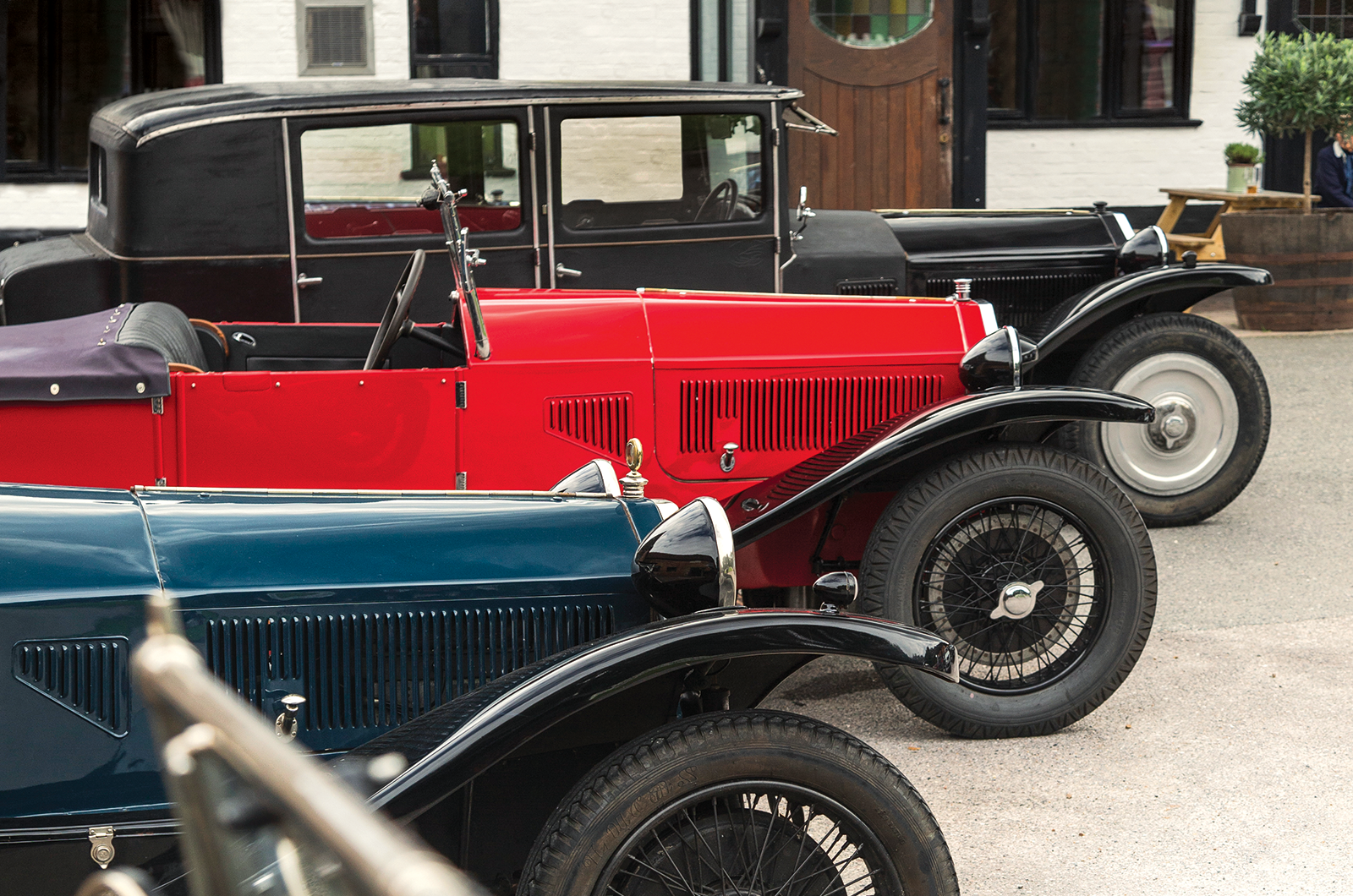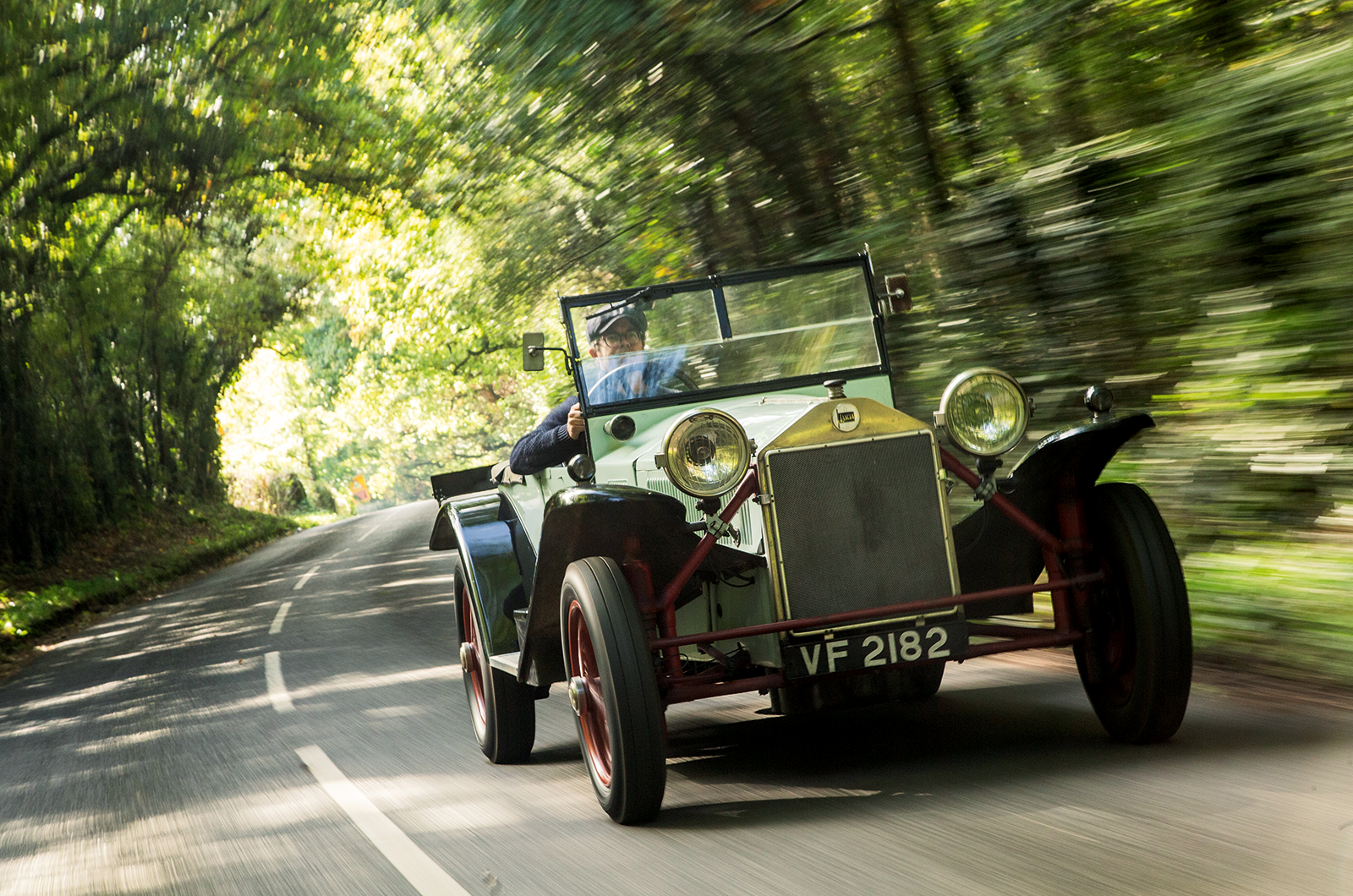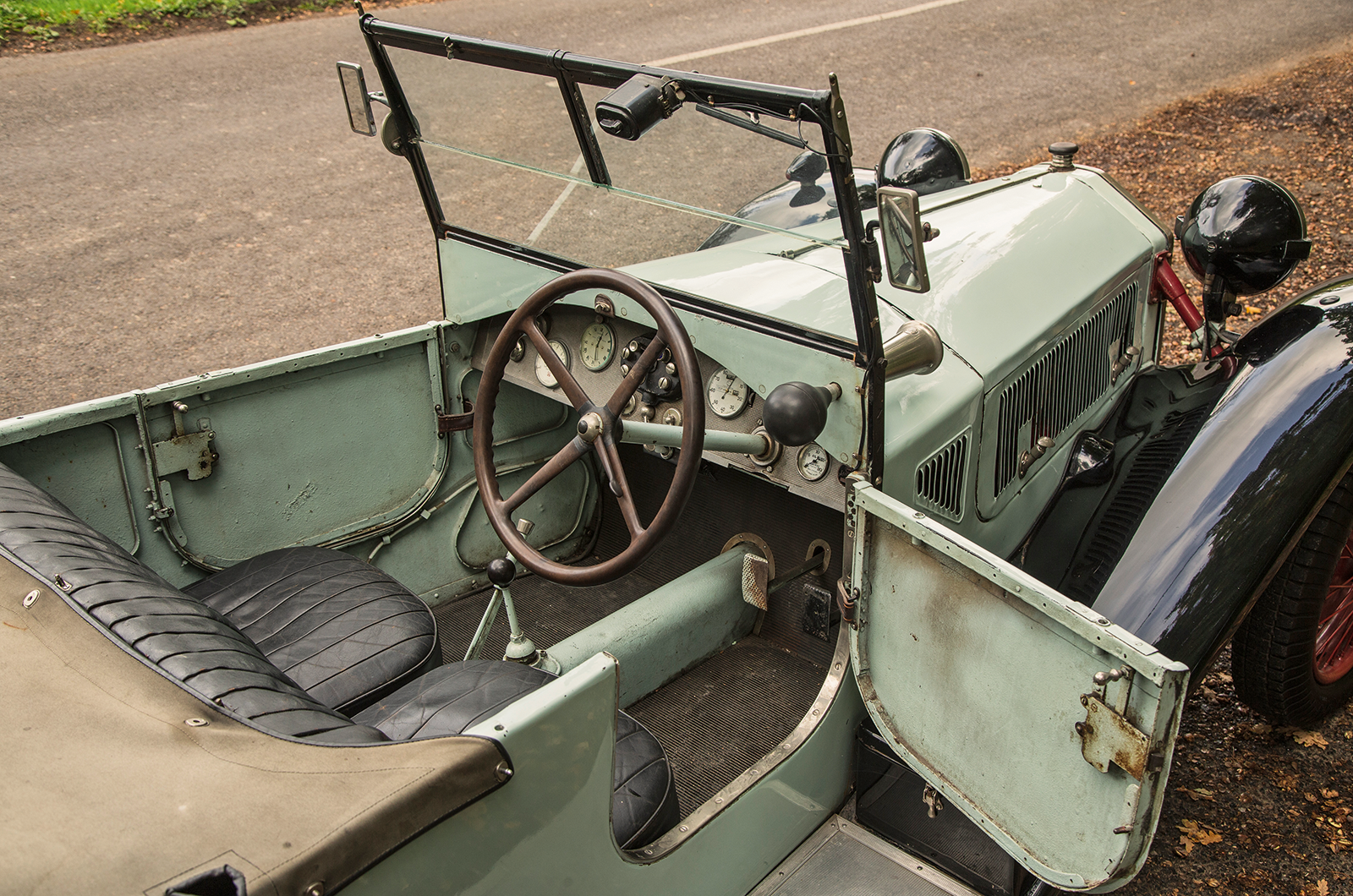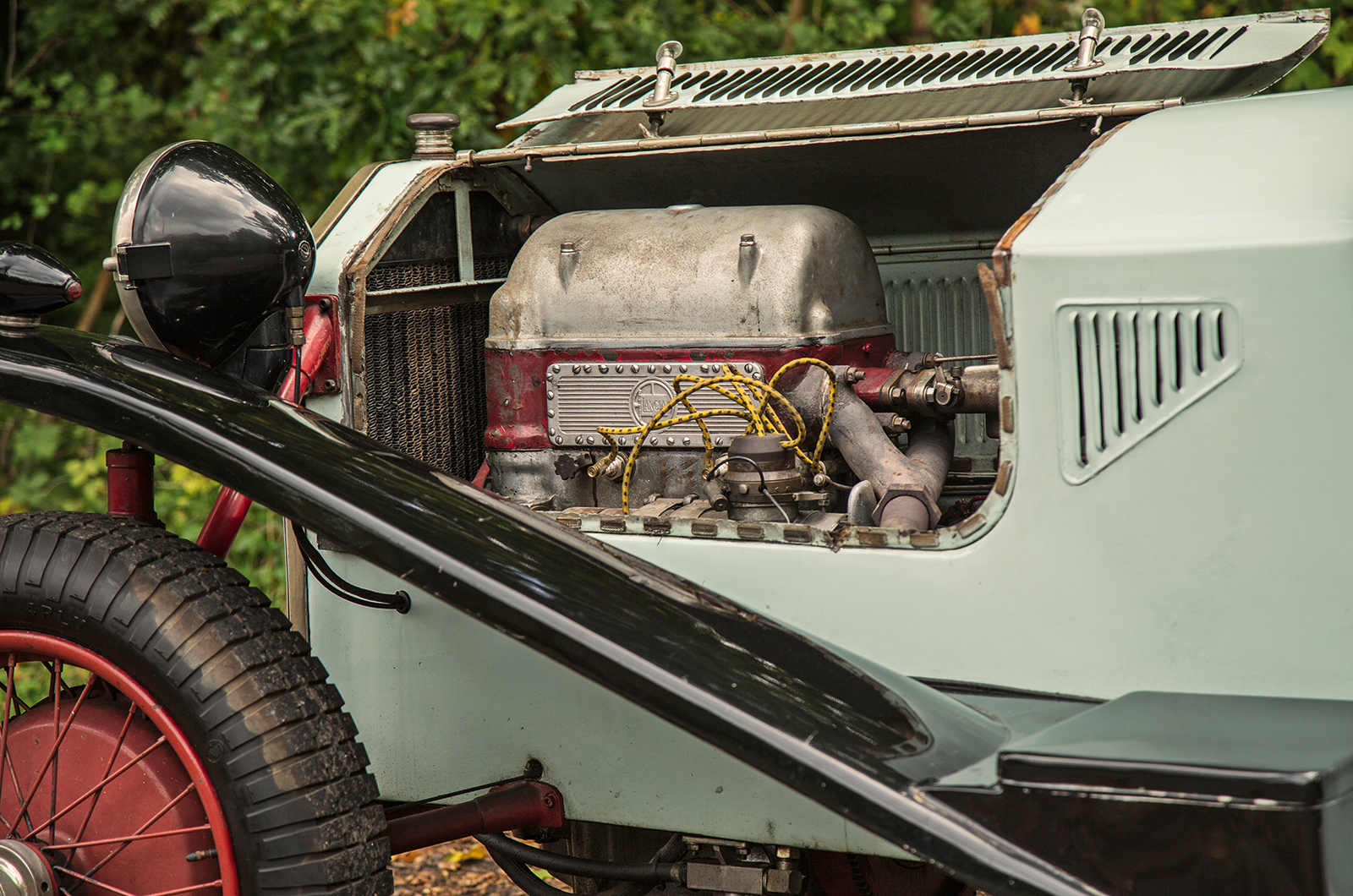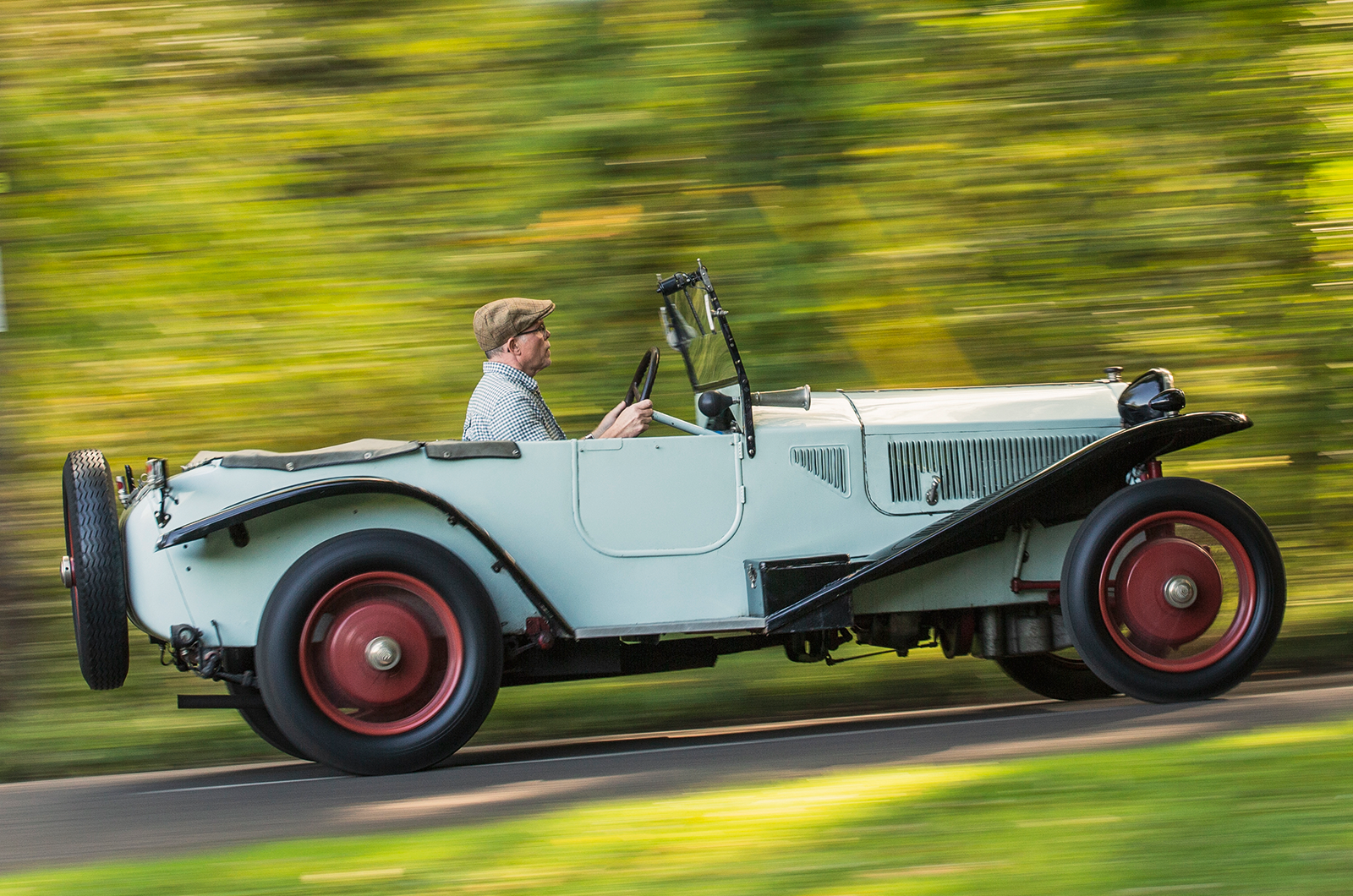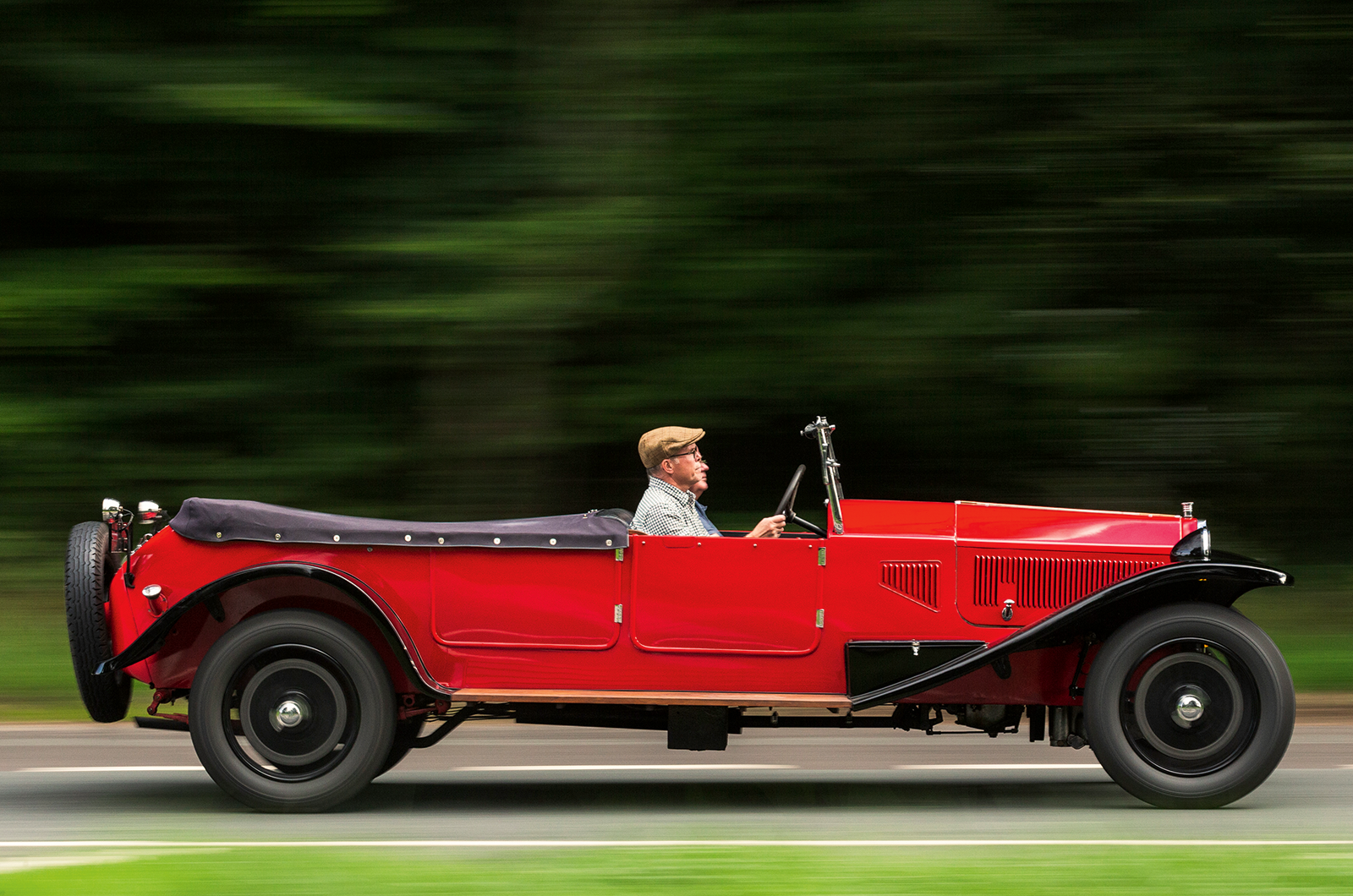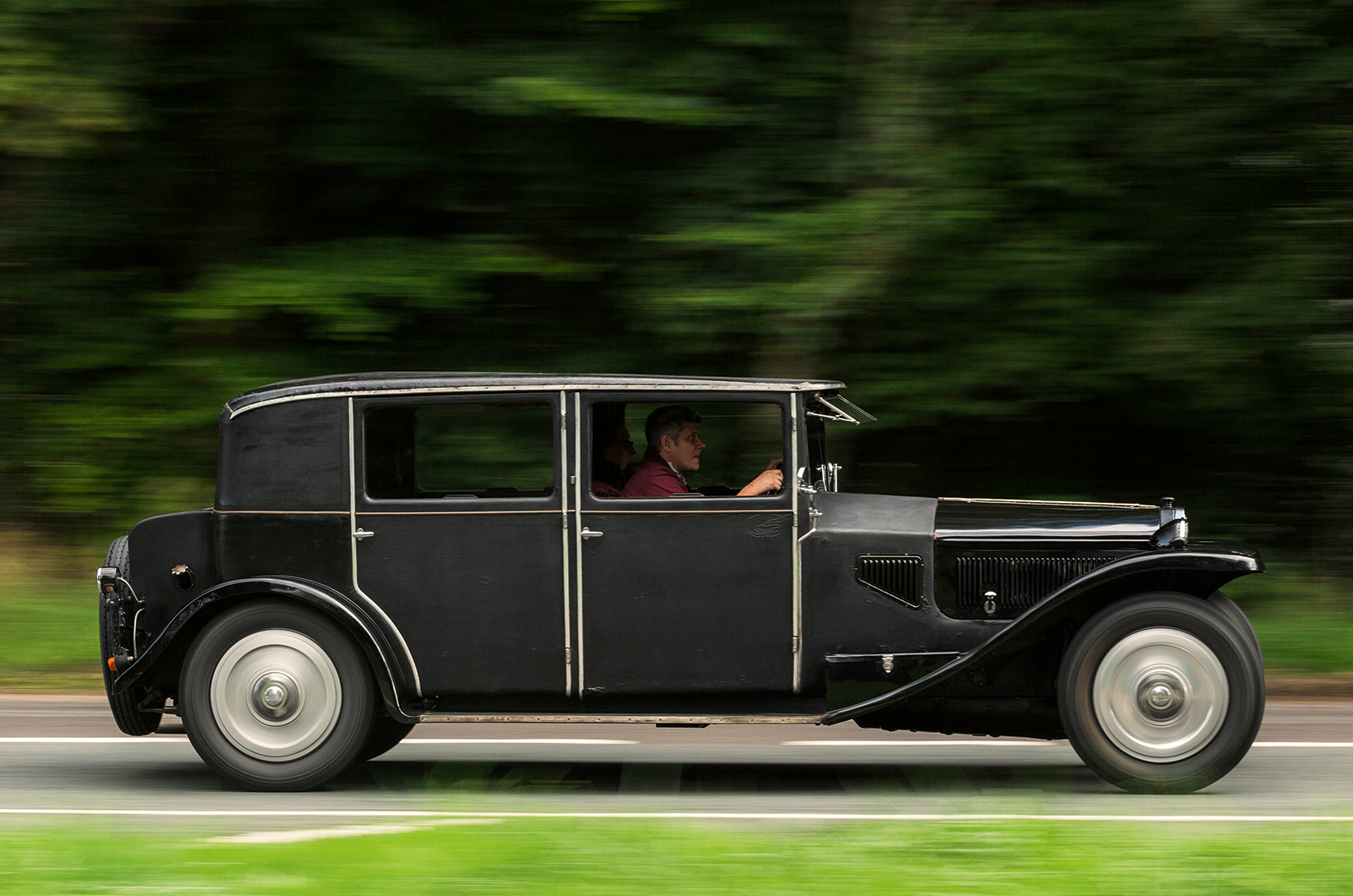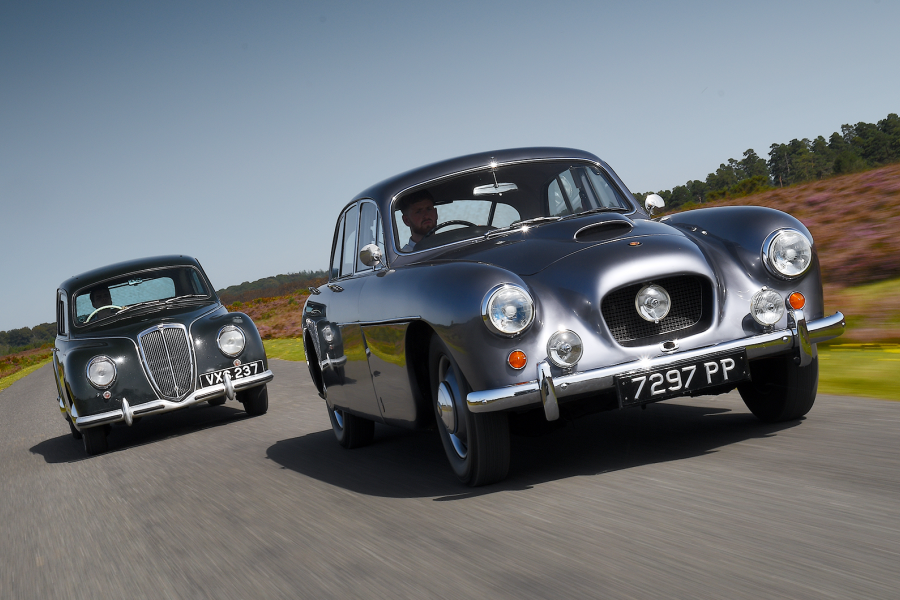On 15 September ’31, production ended after a total of 12,998 Lambdas had been built.
Colin Wise’s 1929 Eighth Series long-chassis Torpedo tourer epitomises perfectly the gulf of difference between the design of a Lambda and any other vintage car. It sits low, for a start, and viewed in profile looks unfeasibly long in the wheelbase.
It’s also strange to enter a car of this era and see a gear tunnel running between you and your passenger, topped by a stubby, straight gearlever, with three floor-mounted pedals following a conventional layout.
The Lancia 2.6-litre V4 is smooth, and has a modern tone and exhaust note
The central binnacle, bespoke to the Eighth Series, houses five clocks, the main two Jaeger items showing speed and revs.
Ergonomically it works well, and as you select first and pull away you’re immediately hit by the utter conventionality of it all.
The 2.6-litre V4 is smoother than you expect and has a distinctly modern tone and exhaust note.
Gears are notchy but only require the quickest double-declutch between short-throw changes, with the lower ratios eliciting a whine, absent in third and fourth.
The Eighth Series saloon’s imposing stature belies its impressive pace and agility
Dynamically, the Lambda confounds your expectations of how a vintage car should drive.
You sit low, and as soon as cruising speed is reached – 45-50mph feels comfortable – the deft control of the body, lack of play in the steering and eagerness to change direction (despite this being a long-chassis car) speak more of a competent early post-war machine.
Even its brakes, while needing a firm push, are strong and have plenty of feel.
Next up is Nick Benwell’s 1929 Eighth Series long-chassis platform saloon, which is another revelation.
The option of a longer-wheelbase chassis and clever re-engineering of the monocoque allowed Lancia to offer a variety of body styles over the years
An original UK-supplied car, its Weymann body was fitted not by Lancia but by the Albany Carriage Company in London, and it affords limousine-like levels of rear space.
Looking more like a Mafia staff car than a sporting saloon, the fact that this 16ft-behemoth can still be hustled along twisting Hampshire back-roads, thanks to a beguiling mix of grip, composure and relatively light, uncorrupted steering, perhaps presents the strongest case for what Lancia achieved with the Lambda.
One of the most influential cars of our time? An entire industry seemed to think so.
Images: Luc Lacey
Thanks to: The Phoenix Inn; The Phoenix Green Garage; WW Heale Historic Motor Car Workshops
How does an early Lambda compare?
A shortened wheelbase renders this Fourth Series tourer on the flighty side at times
Like the majority of Lambdas, Walter Heale’s 1925 Fourth Series UK car is not as it left the factory.
It was modified in 1936, with 2ft removed from its chassis, reducing its wheelbase from 3100mm to 2490mm.
Julian Jane of Vintage Sports-Car Club fame made the chop, which suggests the car was to be used for trialling or hillclimbing in period.
Heale has only recently acquired the 2.1-litre car with a four-speed ’box (upgraded from its standard three-speed), and is keen to swap the rugged-looking Blockleys for a correct set of beaded-edge tyres.
The cockpit in the 1925 Fourth Series Lancia Lambda is more basic than later models, but its gearshift is better and the dials are pretty
He’s also less than enamoured by the colour combination and will probably see to that, too. But in every other respect, this is a highly authentic early-series Lambda.
There’s a spartan purity about the cabin, compared with the Eighth Series cars.
The earlier layout has just three beautiful dials – speedometer, clock and a Le Nivex fuel gauge calibrated to 15 gallons – all set into an aluminium dashboard with various switches, including a headlight-dip lever, positioned around the central ignition pod.
The 2.1-litre Lancia V4 feels usefully torquey
The Autocar’s first 1923 Lambda test car weighed 1065kg and, with its abbreviated length, I’m guessing that this one is closer to 800kg, so it’s no surprise that it feels sprightly from the off.
If anything, gears can be changed even more quickly than in the later models, although with this car’s improved torque-to-weight advantage you tend to let it lug away, even up hills.
The steering is nicely weighted, but while its significantly shorter wheelbase makes this Lambda keen to turn in, its control over awkward surfaces suffers a touch and can lead to some entertaining moments during cornering.
But there’s no separate-chassis waywardness, and for a near-century-old car it inspires far more confidence than it has any right to.
Factfiles
Lancia Lambda Fourth Series Torpedo (Tipo 214)
- Sold/number built 1924-’25/850
- Construction pressed-steel monocoque
- Engine aluminium-block, iron-head, ohc 2119cc V4, Zenith 36HK triple-diffuser carburettor
- Max power 49bhp @ 3000rpm
- Max torque n/a
- Transmission four-speed manual, RWD
- Suspension: front independent, by coil springs, sliding pillars rear live axle, semi-elliptic springs, friction dampers
- Steering worm and sector
- Brakes drums
- Length n/a
- Width 5ft 4in (1661mm)
- Height n/a
- Wheelbase 10ft 2in (3100mm)
- Weight 2348lb (1065kg)
- 0-60mph n/a
- Top speed 68mph
- Mpg n/a
- Price new £675
- Price now £100,000*
Lancia Lambda Eighth Series Torpedo (Tipo 224)
- Sold/number built 1928-’31/3901
- Construction pressed-steel monocoque
- Engine aluminium-block, iron-head, ohc 2568cc V4, Zenith 38HK carburettor
- Max power 65bhp @ 3500rpm
- Max torque n/a
- Transmission four-speed manual, RWD
- Suspension: front independent, by coil springs, sliding pillars rear live axle, semi-elliptic springs, friction dampers
- Steering worm and wheel
- Brakes drums
- Length n/a
- Width 5ft 4in (1661mm)
- Height n/a
- Wheelbase 13ft 2½in (3420mm)
- Weight 2800lb (1270kg)
- 0-60mph n/a
- Top speed 75mph
- Mpg n/a
- Price new £745
- Price now £100,000*
Lancia Lambda Eighth Series Weymann saloon (Tipo 222)
- Sold/number built 1928-’31/3901
- Construction pressed-steel monocoque/platform
- Engine aluminium-block, iron-head, ohc 2568cc V4, Zenith 38HK carburettor
- Max power 65bhp @ 3500rpm
- Max torque n/a
- Transmission four-speed manual, RWD
- Suspension: front independent, by coil springs, sliding pillars rear live axle, semi-elliptic springs, friction dampers
- Steering worm and wheel
- Brakes drums
- Length n/a
- Width 5ft 4in (1661mm)
- Height n/a
- Wheelbase 13ft 2½in (3420mm)
- Weight 3196lb (1450kg)
- 0-60mph n/a
- Top speed 75mph
- Mpg n/a
- Price new £875
- Price now £100,000*
*Prices correct at date of original publication
Enjoy more of the world’s best classic car content every month when you subscribe to C&SC – get our latest deals here
READ MORE
Austin Seven at 100: the car that got Britain moving
Driving Lagonda’s peerless V12
The sole surviving Lancia D23
Simon Hucknall
Simon Hucknall is a senior contributor to Classic & Sports Car
